Since silicone hit the market, consumers and eco-conscious minds have been presented with the argument: is silicone better than plastic? The short answer, yes. Technically. Especially when it comes to single-use plastic. The longer answer…maybe. While the material won’t degrade into smaller pieces and it does not release toxins into the air when burned, it does still need to be recycled properly or it will last just as long, if not longer, than plastic in a landfill.
We’re all aware of the detrimental effect plastic has on our environment but what are the alternatives, and is silicone sustainable? More importantly, what are the environmental impacts of using and disposing of silicone?
As with anything regarding sustainability and our environment, there is a lot of controversy surrounding the use of silicone. And really there is no right or wrong answer. However, by learning about the material and how to properly use and dispose of it, you can make the informed decision that best suits your journey to a more zero waste lifestyle.
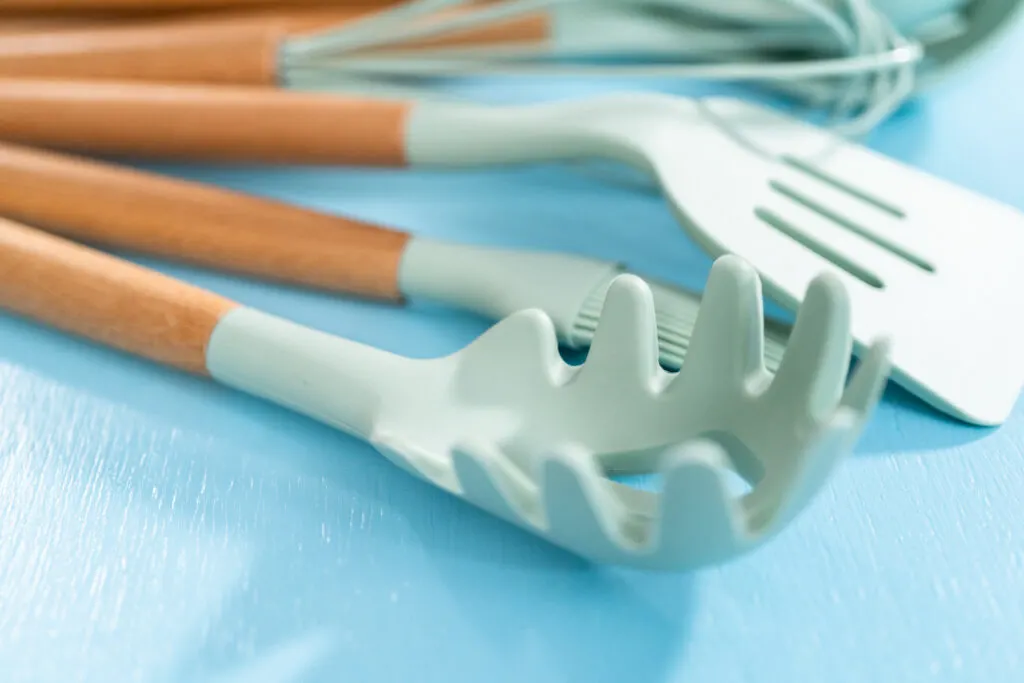
This article may contain compensated/affiliate links. See our full disclosure here.
Table of Contents
What is Silicone?
Let’s start with the basics, what exactly is silicone and what is silicone made from?
Silicone is a polymer made up of siloxane, a rubber-like substance. If you want to get really technical, the site, Chemical Safety Facts has a great breakdown of the chemistry and details on what silicone is and the various ways it is used.
There is a common misconception that silicone is made from sand, but this is not the case. There are actually three different materials and steps related to silicone products that sound and look similar but are very different in their chemical makeup.
Silica is known as silicon dioxide which is the raw material that goes into silicone. Examples of pure silica include beach sand which is believed to be where the confusion may come from.
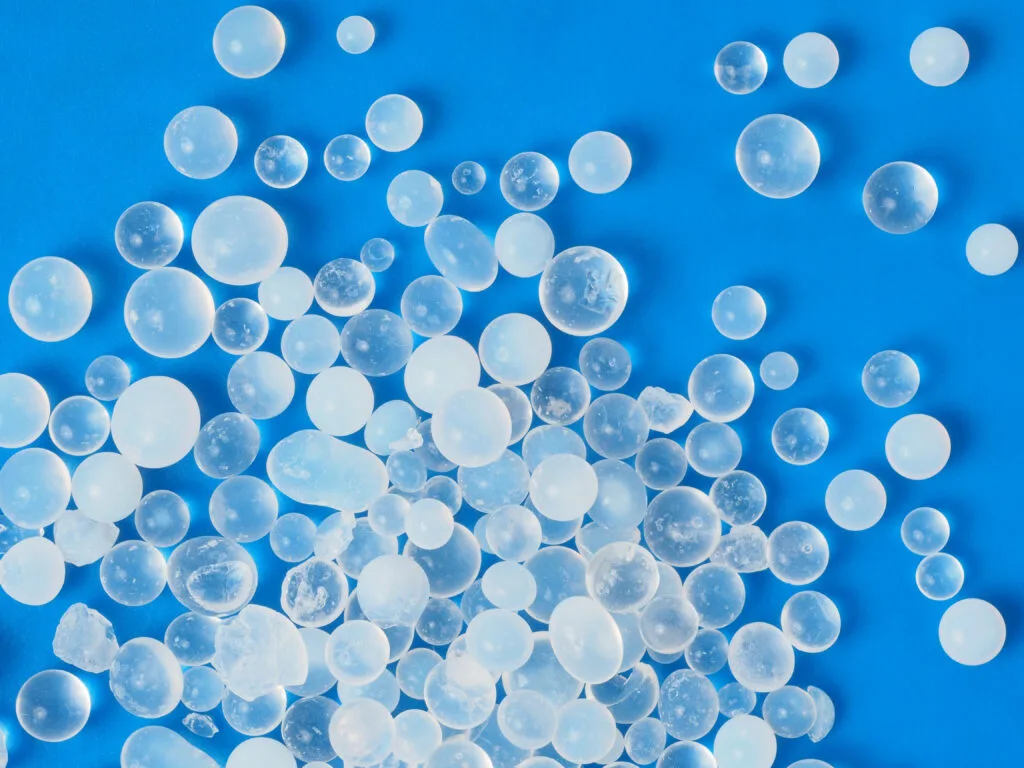
Silicon is the next step and is made when silica is heated with carbon at a very high temperature in a special industrial furnace. The important thing to note here is that there is no natural form of silicon.
Finally, when silicon is heated and reacted with fossil fuels, this is when siloxane, or silicone, is created.
Is Silicone Plastic?
Despite its association with plastic, silicone is actually a synthetic rubber. Meaning that silicone is not the same as plastic, although there are similarities in their uses and practicality. However, the two materials are made up of different components. The big difference (and most important environmentally speaking) is how these two materials are made and sourced.
While silicone does have a man-made element to it, plastic is a fully man-made material that is formed from resources such as crude oil which is extracted from the Earth. The way in which this material is sourced is the subject of much controversy due to the large carbon footprint it leaves.
Plastic is also mainly made for single use with a huge 40% of all plastic being used once before being thrown away.
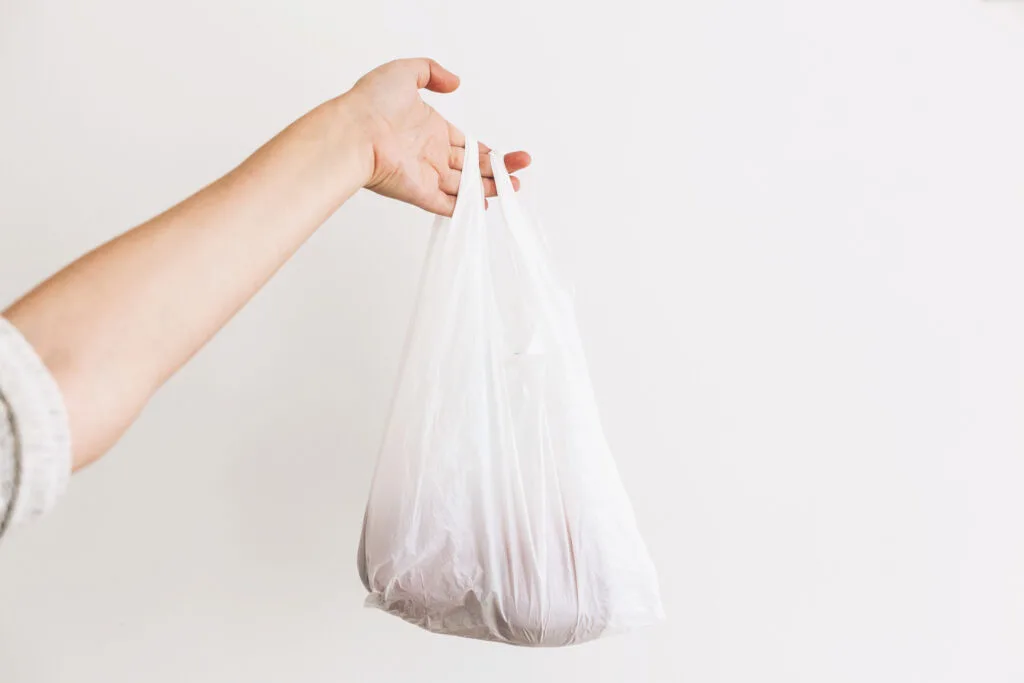
On the other hand, silicone comes from silica which is a naturally occurring substance. While the heating process to turn silica into silicon then into silicone can be an environmentally damaging process, it is at least less damaging than plastic.
Silicone and plastic are often compared because of their similarities in functionality and properties such as: transparency, flexibility, and water and temperature resistance. Silicone has a higher resilience to its structure making it more long-lasting than its plastic counterpart.
That alone doesn’t absolve it from its potential to harmfully impact the environment, however, it can be a better alternative to those looking to move away from plastic while still being budget-conscious.
Silicone vs. Rubber
While we’re at it, let’s talk rubber. Because silicone is a rubber-like substance many question, is silicone the same thing as rubber?
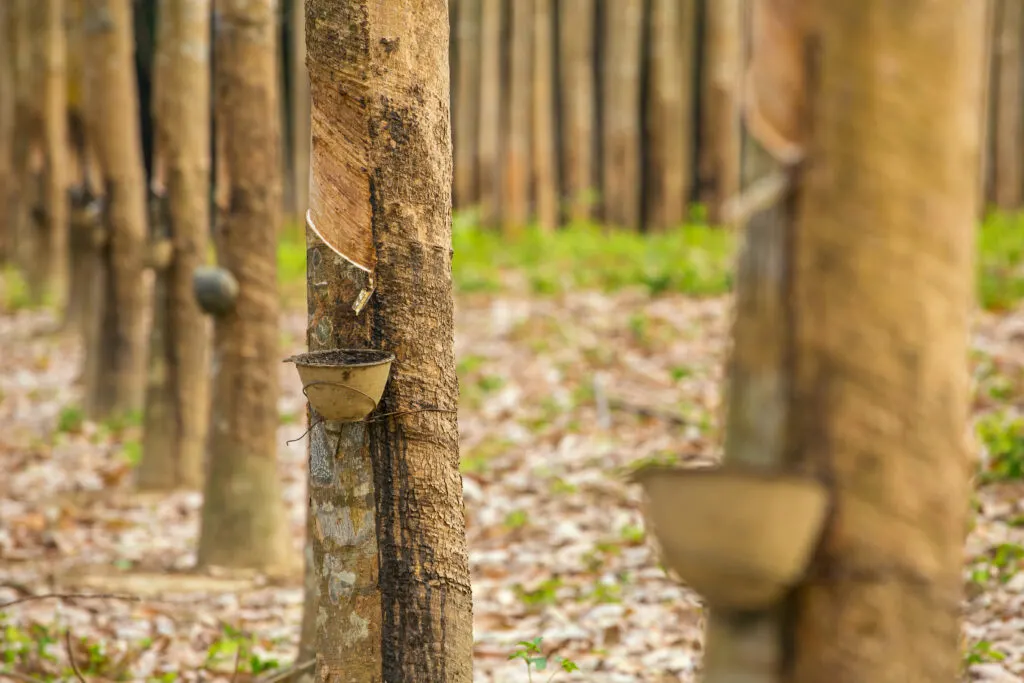
Not quite. Rubber is a naturally produced material. Silicone is synthetic. While rubber is made up of carbon bonds, silicone is made up of silicon and oxygen bonds. For a more complete comparison, Difference Between, has a great description of both materials and even has a chart comparing the two.
Essentially silicone is a synthetic rubber that holds up better to heat, fungus (hence using it in cooking utensils and kitchen materials), and chemicals. Think of it as the stronger sister to rubber.
So Why Choose Silicone?
As we now know, silicone is a hybrid material whereas plastic is completely man-made. In those regards, it can be seen as a more eco-friendly option.
As with plastic, silicone does have the problem of proper disposal (though it can be recycled, more on that below), it is easy to source and is relatively cheap to produce. Silicone is a great option to get you started toward a more eco-friendly lifestyle without going broke in the process.
As with any product, there’s going to be some advantages and disadvantages. Let’s discuss what silicone has to offer and some of its not so great attributes as well.
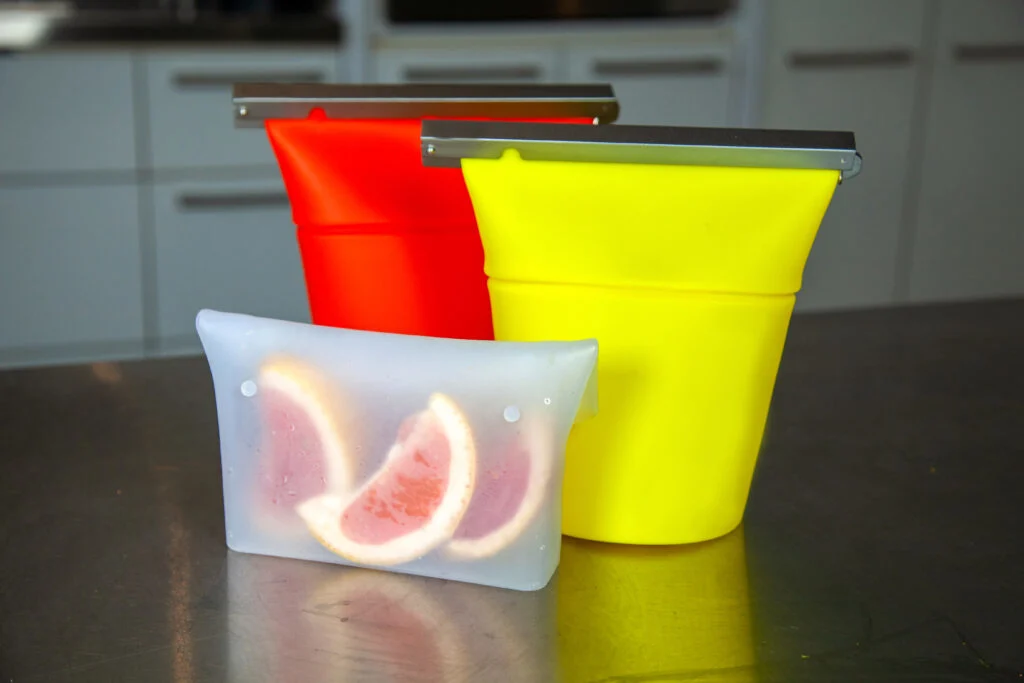
Advantages to Silicone
Silicone has an array of advantages but the biggest is its use in the kitchen! Cooking utensils, baking sheets, etc. using silicone are completely safe for food-grade applications. Since the material doesn’t react with food or beverages and doesn’t break down when heated, it makes it the perfect versatile material at home and in restaurants.
It’s heat and water-resistant so perfect for the oven and dishwasher which makes it easy to use, clean, and maintain. That durability comes in handy when talking about sustainability. A silicone product will last much longer than a plastic one, and if you do manage to burn it, there are no harsh chemicals released into the air.
A great way to check if the product is purely silicone or if it has any kind of chemical filling is to pinch the surface and look for a color change. If the product does change color, the silicone may contain some unnatural chemical that may not be as resistant.
Silicone is wonderfully multifunctional with an ever-expanding list of products made from the material (more on that below!).
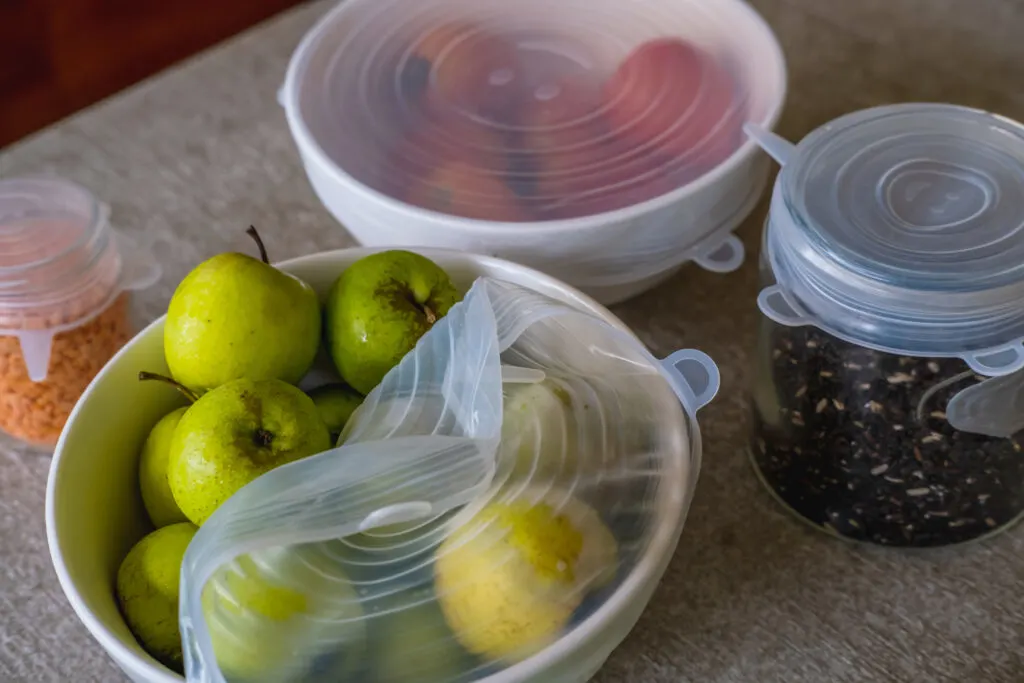
Disadvantages to Silicone
You can’t sing its praises without also considering the more problematic aspects of silicone in order to truly make an informed decision.
The biggest disadvantage to silicone is that it is not a naturally renewable material because of its hybrid composition. But if you’re wondering ‘is silicone biodegradable?’, unfortunately, the answer is no.
Because of that hybrid nature, it isn’t biodegradable. Meaning if you don’t dispose of it properly, it’ll sit in a landfill for hundreds of years making it as bad as plastic.
While it doesn’t react to heat, extremely high temperatures can cause the material to become less stable and create compounds that will cause the material to wear away. Making you replace that silicone cookie sheet sooner rather than later if you accidentally broil those cookies.
There is a difficult process in properly recycling silicone. Because of that many consumers don’t want to bother and will throw it out with their general waste thus adding to the landfill problem.

Is Silicone Recyclable?
Here’s the big question, can silicone be recycled. Yes, it can. However, it isn’t as easy as simply putting it into the recycling bin with the rest of your recyclable household waste.
When finished with a silicone product it needs to be taken to a specific recycling center that accepts silicone. Or mailed to a service such as TerraCycle.
So how is silicone recycled? Once taken to the specialized facility the silicone products are broken down into siloxane compounds. This compound gets depolymerized into an oil which can then be used for industrial machines, water repellents, etc.
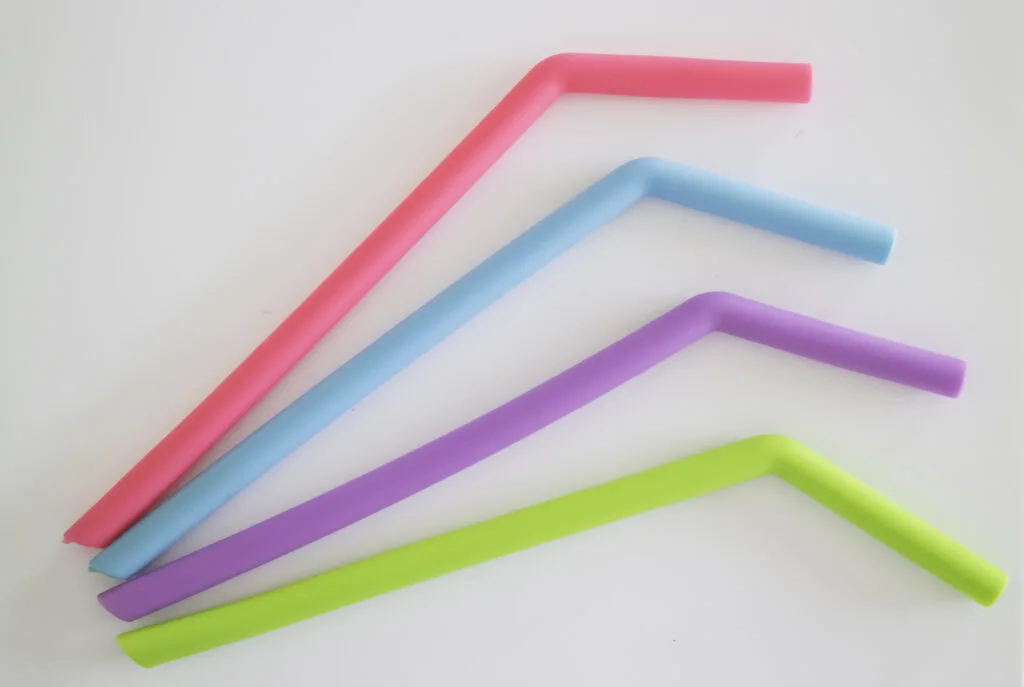
Is Silicone Safe to Use?
Silicone is generally a safe product otherwise it wouldn’t be used around our food and our bodies. However, this does depend on the processing and creation of silicone (remember that trick of checking discoloration in silicone for unwanted chemicals). There have been instances where silicone was not properly maintained and toxic siloxane compounds were formed.
To ensure the safety of silicone is upheld, always make sure your products have been thoroughly cleaned before each use and properly maintained.
When using silicone to store food, look for food-grade silicone products. And when using it for hygiene or beauty, look for medical-grade silicone.
Is Silicone BPA free?
If you’re considering switching to silicone for your food storage needs, you’ll be happy to know silicone is BPA free.
Eco-Friendly Silicone Options Around the House
Silicone is extremely versatile, allowing for products from an array of industries from home to accessories. Have an everyday product that gets used over and over again? Think of investing in a silicone version!
Silicone in the Kitchen
Silicone is a popular option for cooking utensils, storing food, and for cleaning. Here are some of the more popular uses:
Sandwich and Food Bags
Silicone is a great material for eco-friendly lunch boxes given its secure and airtight properties. The material is safe, BPA free, and can be used by kids and adults, whatever your lifestyle.
Silicone bags are also safe to use for food storage or heating leftovers in the microwave. Silicone bags can easily be washed in the dishwasher and are perfect for preserving food’s freshness in the fridge.
Our favorite silicone bags are made by Stasher! They’re long-lasting, dishwasher safe, and have a myraid of uses… Order yours here.
Reusable Straws
Single-use plastic straws have been the bane of the environment in recent years. Found in restaurants, fast food chains, and coffee shops galore, thankfully many companies have made the switch from plastic to a more sustainable paper alternative.
But what about the straws you use at home? Many travel cups will have a plastic straw accompanying them. Silicone reusable straws are a great eco-friendly alternative. Easy to clean and longer-lasting, no paper residue required.
Baking Equipment
Speaking of food, one of the most popular industries when it comes to silicone is the baking industry.
Baking sheets, baking cups, cookie sheets, candy molds, are all popular silicone choices. The material is incredibly flexible and it helps reduce food sticking and burning. No more need for single-use parchment paper!
Cleaning Equipment
Move away from cheap, disposable cleaning products in your kitchen, and make space for some longer-lasting silicone alternatives. With everything from dishwashing sponges to bottle brushes, baby bibs, and even silicone mops, there is no reason not to adopt a more eco-friendly kitchen cleaning routine.
Silicone in the Bathroom
You may be surprised to learn of the many ways in which silicone products are being used for hygiene and beauty too! We’ve listed a few of the most popular swaps below.
Menstrual Cups
Silicone is commonly used in feminine hygiene products to make menstrual cups. When taken care of and cleaned properly this is a great way to adopt a zero-waste period.
These menstrual cups are made from medical-grade silicone so not only are they bleach and chemical-free, but they drastically reduce the amount of waste created by pads and tampons. That really adds up over the months and years. While there is a bit of a learning curve to using them at first, they can be one of the most comfortable options once you’ve got the hang of using them properly.
Makeup Applicators and Q Tips
Makeup application just got a whole lot smoother with the arrival of silicone makeup sponges and brushes. Unlike disposable products, they don’t absorb the product and can be easily cleaned, meaning both your makeup, and the applicator will last a lot longer.
Reusable q tips have become a key part of having a zero waste bathroom in recent years, and they serve multiple purposes – from makeup application to ear cleaning! Just use, wash, and pop it back in its handy case for next time.
Final Thoughts on Silicone
There are always going to be pros and cons when deciding what kind of material or product is right for you and your lifestyle. Everyone will have their own criteria and requirements. Silicone can be a sustainable option and one that is certainly worth the money saved and the longevity of your products will help you on your way to zero waste.
Always be sure to properly dispose of your silicone products properly. It’s an effort but it’s a conscious one and a choice we should all consider when trying to eradicate the monster that is plastic. We can help make that transition, we just all have to do our part.






